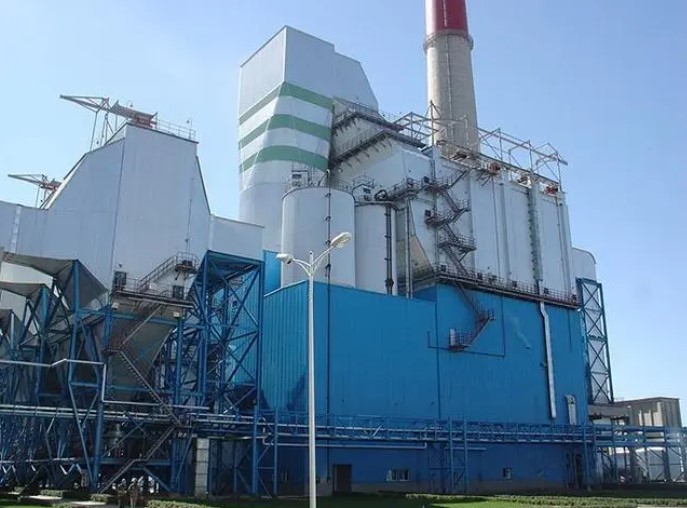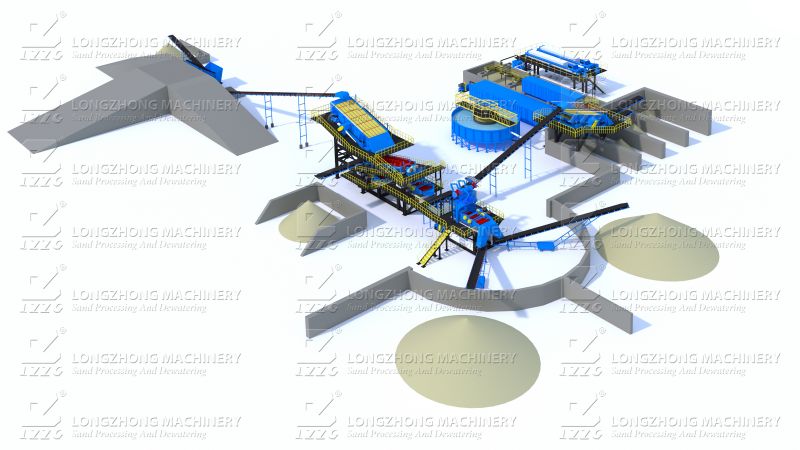slag wet treatment process and equipment required for waste incineration power plant
 December.01,2018
December.01,2018
 The solution for wet process of slag form power plant
The solution for wet process of slag form power plant
The slag contains a certain amount of unburned impurities and valuable metals such as iron, aluminum, copper, and zinc. Divide unburned impurities in the slag
Separation, the separation of valuable metals is the two main links of slag treatment. At present, domestic domestic waste incinerator slag is mainly taken
The wet process is carried out, and the treatment process is basically similar: separating the impurities in the slag by manual sorting; under hydraulic conditions, the materials are
After crushing, the metal iron is sorted by a magnetic separator, and the non-ferrous metal in the slag is selected by re-election equipment; the slag tail after sorting
After the slag is simply spread, various recycled products are prepared.

Wet processing principle
The principle of the slag wet treatment process is re-election, because the density of non-metallic substances such as slag, glass, ceramics, etc. in the slag is 1.2 to 2.7 g/c.
Between m3, the density of metals such as iron, copper and zinc is 7 to 9 g/cm3, and there is a large difference in specific gravity between the two types of substances. Impact on water
Under the action, the separation between the metal and the non-metal material in the slag is realized by the gravity sorting device, and the iron in the slag is selected.
Copper, zinc and other metals. The tailings after the metal are selected to prepare the non-burning block or the inorganic mixed material to realize the slag of the domestic waste incinerator
Consumptive.
Process flow
The domestic waste incinerator slag wet treatment process mainly includes impurity removal, iron removal, crushing, non-ferrous metal separation, precious metal separation, and capital
Source processing and other links.
The main process of slag wet processing solution is as follows: the slag is fed by the forklift to the upper hopper with the grille, and the unburned debris is manually cleared.
Avoid entering the sorting line; the material entering the hopper is transported through the belt, and the bulk scrap is selected by manual sorting and magnetic selection of the cross-belt magnetic separator; the material after the iron is introduced into the hammer crusher for crushing. The magnetic roller selects the magnetic powder; the sorted material enters the jig for gravity sorting, and the heavy medium at the bottom of the jig enters the shaker to purify and remove impurities, and selects the heavy non-ferrous metal; the tail of the upper layer of the jig The slag enters the drum screen, and the impurities contained in the tailings are sieved out, and after being precipitated in the sedimentation tank, a relatively pure tailings is obtained;
After the heavy mixture in the middle part of the jig is broken by the hammer crusher, the magnetic powder is used to select the magnetic powder and enter
The shaker is used for purification and impurity removal, and the heavy non-ferrous metals are selected. For the sorted heavy non-ferrous metals, the parts are selected by manual sorting.
The precious metals such as gold and silver are separated; the tailings after sorting are simply spread and dried to prepare a recycled product.

Major equipment of power plant slag
The main equipment for the wet treatment process of domestic waste incinerator slag includes cross-belt magnetic separator, hammer crusher, drum screen, wet magnetic
Machine selection, jig and shaker.
The hammer crusher mainly relies on the impact of the hammer to achieve material breakage. The motor drives the rotor for high-speed rotation, and the high-speed rotary hammer head punches
The material is broken by hitting and shearing the tearing material. At the same time, the gravity of the material itself causes the material to rush from the hammer head rotating at high speed to the sieve in the cavity.
The mesh, the material larger than the size of the mesh, is retained on the screen and continues to be struck and ground by the hammer until it is broken to the desired discharge size.
After that, it is discharged through the screen.
During the working process, the jig is reciprocated up and down by a rubber diaphragm, causing the water to move up and down. Water flows through the screenIn the jigging room, under the impact of water, the slag is loose, and the metal with a large specific gravity has a large local pressure and a high sedimentation speed.Upon entering the bottom layer, non-metallic substances with a small specific gravity are transferred to the upper layer. When the water flows back and the liquid level drops, the fine gold with a larger specific gravity.
The granules flow out of the jig through the screen and are discharged from the bottom of the jig. Under the reciprocating action of water, heavy metals gradually.Deposited in the jig room, it needs to be shut down regularly for manual cleaning and collection. LZZG will provides a complete solution for the treatment of waste residues in domestic waste incineration power plants.




